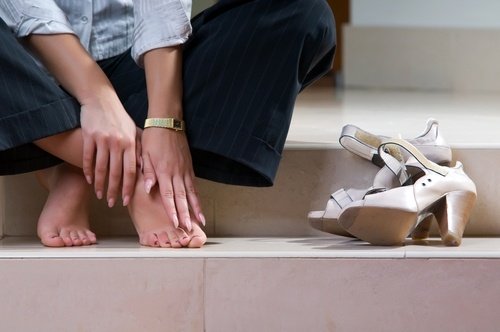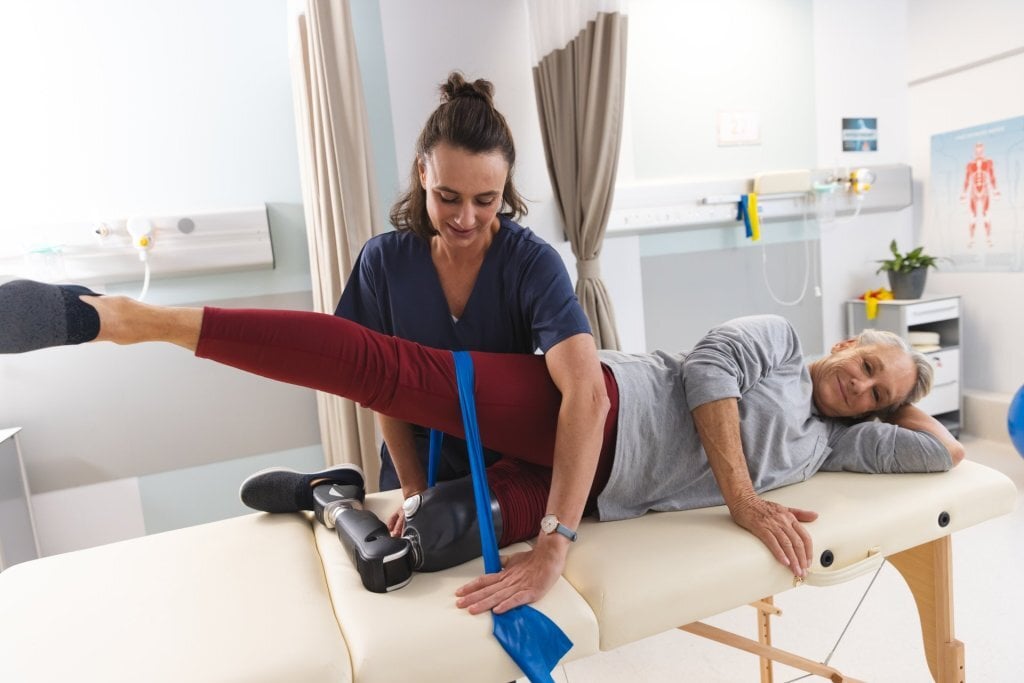- Help Center
-
1-800-774-7785Login

Blog
As a travel therapy or education professional, each new assignment brings the exciting opportunity to experience a different environment, meet new colleagues, and treat a unique population. But adjusting to unfamiliar settings — especially those with different demographics, cultures, and patient expectations — can pose a challenge when it comes to building a strong rapport with patients.
Good communication skills are at the heart of every successful patient relationship, especially for those who frequently find themselves in new locations and varied healthcare settings. Here are some key strategies to help you build trust, ease anxiety, and foster a genuine connection with your patients, no matter where your travels take you.
The Art of Communication: Building Rapport with Patients in New Settings
Madison Gregg Speech Language Pathology, Occupational Therapy, Physical TherapyAs a travel therapy or education professional, each new assignment brings the exciting opportunity to experience a different environment, meet new colleagues, and treat a unique population. But adjusting to unfamiliar settings — especially those with different demographics, cultures, and patient expectations — can pose a challenge when it comes to building a strong rapport with patients. Good communication skills are at the heart of every successful patient relationship, especially for those who frequently find themselves in new locations and varied healthcare settings. Here are some key strategies to help you build trust, ease anxiety, and foster a genuine connection with your patients, no matter where your travels take you.
Traveling therapists are physical, occupational, speech, and respiratory therapists that earn full-time pay and benefits on temporary contracts at healthcare facilities and schools across the U.S. Travel therapists typically partner with a recruiter who learns their preferences and matches them to jobs, helping them work as long or as often as they want.
What is a Traveling Therapist: The Ultimate Guide for Beginners
Madison Gregg Speech Language Pathology, Occupational Therapy, Physical TherapyTraveling therapists are physical, occupational, speech, and respiratory therapists that earn full-time pay and benefits on temporary contracts at healthcare facilities and schools across the U.S. Travel therapists typically partner with a recruiter who learns their preferences and matches them to jobs, helping them work as long or as often as they want.
 We’re looking forward to meeting many of our Florida Occupational Therapists fact-to-face next weekend at the Florida Occupational Therapy Association’s Annual Conference in Orlando. Celebrating 100 years of Occupational Therapy, FOTA17’s schedule is jam packed with Education Sessions, dynamic speakers, a yoga sessions, and an awards ceremony on November 3rd and 4th.
We’re looking forward to meeting many of our Florida Occupational Therapists fact-to-face next weekend at the Florida Occupational Therapy Association’s Annual Conference in Orlando. Celebrating 100 years of Occupational Therapy, FOTA17’s schedule is jam packed with Education Sessions, dynamic speakers, a yoga sessions, and an awards ceremony on November 3rd and 4th.
As the “respected authority on occupational therapy’s contribution to health and well-being in Florida,” FOTA continually works to support and advance the profession while making strides to better serve consumers.
Making a Splash at FOTA’s Annual Conference at the Renaissance Orlando at SeaWorld®
Rochelle Wheeler Technology + Healthcare, Occupational TherapyWe’re looking forward to meeting many of our Florida Occupational Therapists fact-to-face next weekend at the Florida Occupational Therapy Association’s Annual Conference in Orlando. Celebrating 100 years of Occupational Therapy, FOTA17’s schedule is jam packed with Education Sessions, dynamic speakers, a yoga sessions, and an awards ceremony on November 3rd and 4th. As the “respected authority on occupational therapy’s contribution to health and well-being in Florida,” FOTA continually works to support and advance the profession while making strides to better serve consumers.
Meet Erica: A Traveling Therapist with a Sense of Adventure and a Commitment to Occupational Therapy

A few weeks ago while in between assignments, Erica joined her best-friend and flew to Barcelona for a 10-day cruise through the Mediteranian before continuing on a solo journey through Indonesia and London for four more weeks. After such an incredible trip, we were thrilled when Erica shared some of her most memorable moments with us. But first, a little background on one of our favorite therapists..
Erica has been a nanny her entire adult life and had consistantly sought out positions that not only required her skill set, but allowed her the flexability to be on the road and to continue her education. Erica has always wanted to travel. In fact, she needs to travel. So, finding a career that not only allowed her to travel the country, but required it was right up her alley.
Erica completed her Master’s of Science Degree in Occupational Therapy and after a
Meet Erica: A Traveling Therapist with a Sense of Adventure and a Commitment to Occupational Therapy
Rochelle Wheeler Technology + Healthcare, Occupational TherapyA few weeks ago while in between assignments, Erica joined her best-friend and flew to Barcelona for a 10-day cruise through the Mediteranian before continuing on a solo journey through Indonesia and London for four more weeks. After such an incredible trip, we were thrilled when Erica shared some of her most memorable moments with us. But first, a little background on one of our favorite therapists.. Erica has been a nanny her entire adult life and had consistantly sought out positions that not only required her skill set, but allowed her the flexability to be on the road and to continue her education. Erica has always wanted to travel. In fact, she needs to travel. So, finding a career that not only allowed her to travel the country, but required it was right up her alley. Erica completed her Master’s of Science Degree in Occupational Therapy and after a

Dancers and athletes have long known the seemingly magical powers of foam rollers. They can help loosen tight hips or knotted quad muscles. Physical and occupational therapists also use them in a number of different ways during sessions with patients. Check out the list below for the clever ways you can use these rollers on your own:
Work out shin splints
If you feel a mild shooting pain in your shins after hitting the track or the trails, you may have shin splints. You can use your foam roller to work out the pain.
Simply kneel on your roller and slowly work it down to your ankle and back up. Make sure not to hit your knees! That could lead you to accidentally hurting yourself, noted Health magazine.
Learn the creative ways therapists use foam rollers to heal pain & improve mobility (& fight cellulite!)
Jackson Therapy Partners Occupational Therapy, Physical TherapyDancers and athletes have long known the seemingly magical powers of foam rollers. They can help loosen tight hips or knotted quad muscles. Physical and occupational therapists also use them in a number of different ways during sessions with patients. Check out the list below for the clever ways you can use these rollers on your own: Work out shin splints If you feel a mild shooting pain in your shins after hitting the track or the trails, you may have shin splints. You can use your foam roller to work out the pain. Simply kneel on your roller and slowly work it down to your ankle and back up. Make sure not to hit your knees! That could lead you to accidentally hurting yourself, noted Health magazine.


